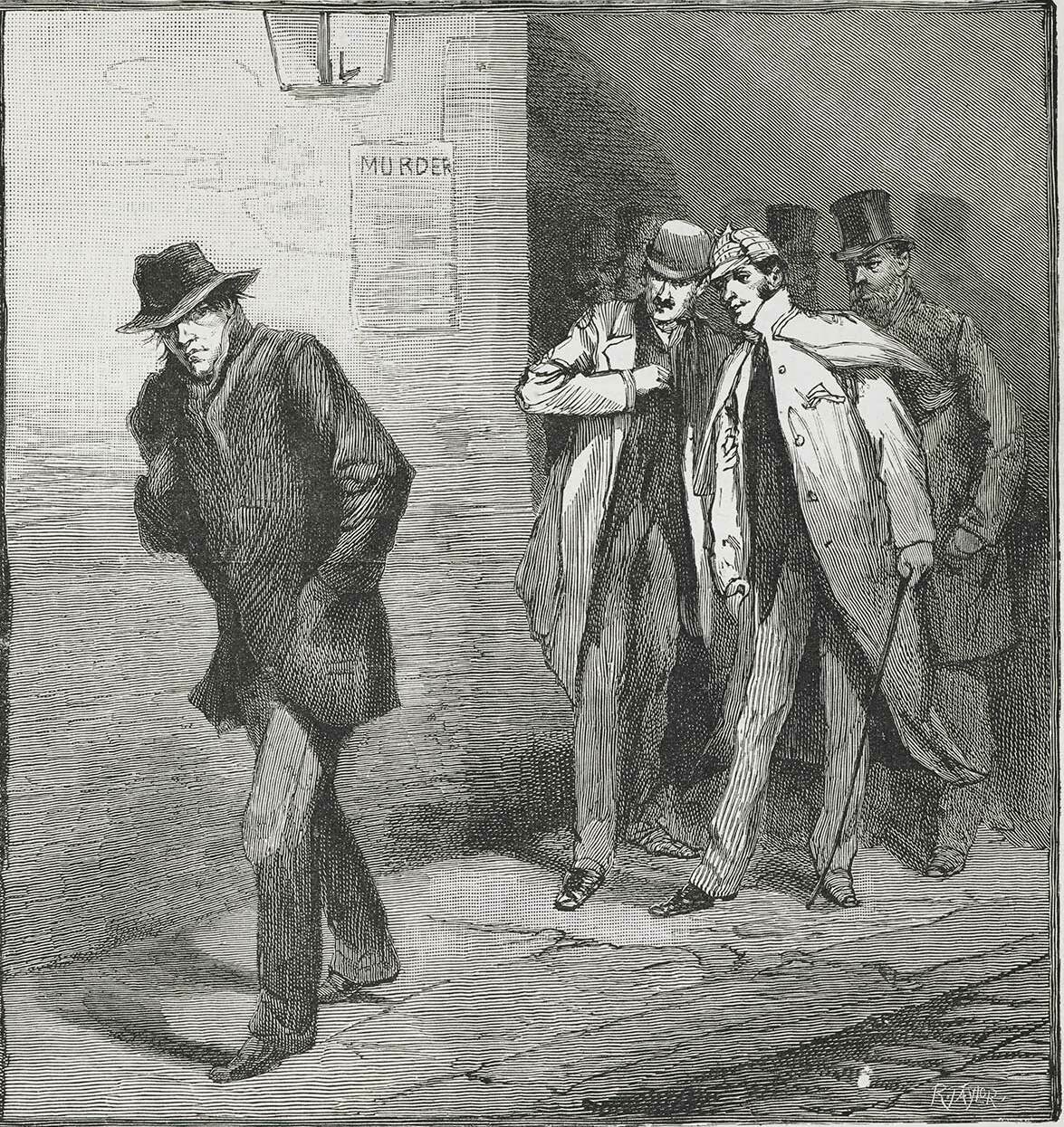First Known Serial Killer Terrorizes The Slums of London

“A Suspicious Character” –one of a series of images from the Illustrated London News for October 13, 1888 carrying the overall caption, “With the Vigilance Committee in the East End”. (Notice the figure in the deer stalker cap–Sherlock Holmes in pursuit of Jack the Ripper?)
On August 6, 1888, Martha Tabram was stabbed to death in the Whitechapel neighborhood of London–many believe she was the first victim of the serial killer known as Jack the Ripper.*
Between August and November, five more women were murdered within a one-mile radius in London’s East End. All were prostitutes and all but one were horribly mutilated by their killer.
The East End was a notorious slum. Violence against prostitutes was not unusual. Tabram’s death received only a passing mention in the papers, described by The Daily News as a “supposed murder” even though she had been stabbed nearly forty times.* With the discovery of the second murder on August 31, the story became front-page news. The murders caught the public attention not only because of their brutality, but because of gloating letters sent to both Scotland Yard and the Central News Agency by a man calling himself Jack the Ripper. (Some or all of the letters may have been written by a journalist trying to heighten interest in the story.) Public opinion on the subject was so hot that both the Home Secretary and the London Police Commissioner resigned as a result of the failure to make an arrest.
From a historical perspective, the case provides a great deal of information about police procedure and life in the slums in Victorian London. Newspapers reported on the inquests, the investigation, and the appalling conditions prevalent in the East End. Reporters interviewed slum residents and police officers alike trying to keep the story alive.
Jack the Ripper was never caught and the number of his victims remains uncertain. (The police files included a total of eleven women whose deaths shared some of the elements associated with Jack the Ripper.) The case was officially closed in 1892, but his murders continue to fascinate armchair detectives–so much so that entire websites are devoted to “ripperology.” In the 125 years since his killing spree ended, Ripper enthusiasts have offered more than 100 possible identities for the killer, ranging from a German sailor on shore leave to Queen Victoria’s grandson Albert Victor, the Duke of Clarence.
* AKA The Whitechapel Murderer and Leather Apron. Whitechapel Murderer I get, but Leather Apron???
**Bad copy-editing? An odd variation on describing someone as a “suspected” or “accused” murderer prior to conviction? Because the fact that someone was stabbed 40 times does not necessarily mean she was murdered?




